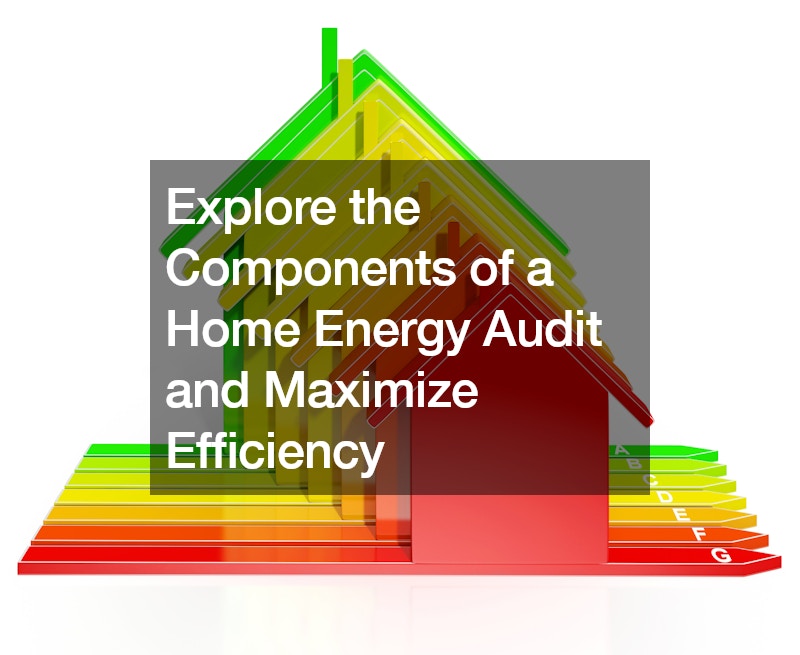
In today’s world, where environmental consciousness and cost-saving measures go hand in hand, understanding and optimizing your home’s energy usage is crucial. One of the most effective ways to achieve this is through a comprehensive home energy audit. This process involves a thorough examination of your home’s energy consumption patterns and identifying areas where improvements can be made to maximize efficiency and minimize waste.
Let’s delve into the key components of a home energy audit and explore how they can help you save money while reducing your environmental impact.
Detecting Air Leaks
One of the primary focuses of a home energy audit is to detect and seal air leaks throughout your home. Air leaks, often found around windows, doors, electrical outlets, and ductwork, can significantly impact energy efficiency by allowing heated or cooled air to escape and outdoor air to infiltrate. Techniques like the blower door test and the use of a smoke wand help auditors pinpoint these leaks with precision. Once identified, sealing these leaks with caulking, weather stripping, or foam insulation can lead to substantial energy savings.
Furthermore, addressing air leaks not only improves energy efficiency but also enhances indoor comfort by maintaining consistent temperatures throughout your home. By sealing gaps and cracks, you can prevent drafts and cold spots, creating a more comfortable living environment for you and your family. Additionally, reducing air leaks can contribute to better indoor air quality by minimizing the entry of dust, pollen, and pollutants from the outdoors, promoting a healthier home environment overall.
Insulation Inspection and Upgrades
Another critical aspect of a home energy audit is evaluating the insulation levels in your attic, walls, and floors. Proper insulation acts as a barrier against heat transfer, keeping your home cooler in the summer and warmer in the winter while reducing the workload on your heating and cooling systems. During the audit, auditors assess the thickness and condition of existing insulation and may recommend adding more insulation to achieve optimal levels.
In addition to inspecting insulation, auditors may also recommend upgrading to more energy-efficient materials, such as blown-in insulation or foam insulation, which offer superior thermal performance and durability. By investing in insulation upgrades, homeowners can enjoy long-term energy savings and a more comfortable living environment year-round. Furthermore, many utility companies and government programs offer rebates and incentives for insulation improvements, making it a cost-effective investment in the long run.
Efficient Lighting Solutions
Lighting accounts for a significant portion of energy usage in the average home. Therefore, optimizing your lighting system is essential for reducing energy bills and environmental impact. As part of a home energy audit, auditors may recommend replacing traditional incandescent bulbs with energy-efficient alternatives, such as LED or compact fluorescent bulbs. These modern lighting options consume less energy, last longer, and produce less heat, making them an eco-friendly choice for homeowners.
Moreover, advancements in lighting technology have made energy-efficient bulbs available in various styles and designs, allowing homeowners to maintain aesthetics while saving energy. Whether you prefer soft, warm lighting or bright, daylight-quality illumination, there’s an energy-efficient bulb to suit your preferences. By making the switch to efficient lighting solutions, homeowners can significantly reduce electricity consumption and lower their utility bills without sacrificing quality or comfort.
Appliance Upgrades and Rebates
In addition to addressing insulation and lighting, a home energy audit may also identify opportunities for upgrading appliances to more energy-efficient models. Appliances such as washing machines, refrigerators, and HVAC systems can consume a significant amount of energy if they are old or inefficient. Upgrading to Energy Star-rated appliances not only reduces energy consumption but also qualifies homeowners for rebates and incentives offered by utility companies and government programs.
For instance, replacing an old washing machine with an Energy Star model can cut water usage in half and save on both water and energy bills. Similarly, upgrading to a high-efficiency HVAC system can lead to substantial energy savings while providing better comfort and indoor air quality. By taking advantage of appliance rebates and incentives, homeowners can offset the initial cost of upgrades and enjoy long-term savings on their energy bills.
The Bottom Line
A home energy audit is a valuable tool for identifying opportunities to improve energy efficiency and reduce utility costs. By detecting air leaks, upgrading insulation, optimizing lighting, and upgrading appliances, homeowners can maximize efficiency and minimize waste. Additionally, taking advantage of rebates and incentives can make energy-saving upgrades more affordable and accessible. Ultimately, investing in energy efficiency not only saves money but also helps protect the environment for future generations.
.
